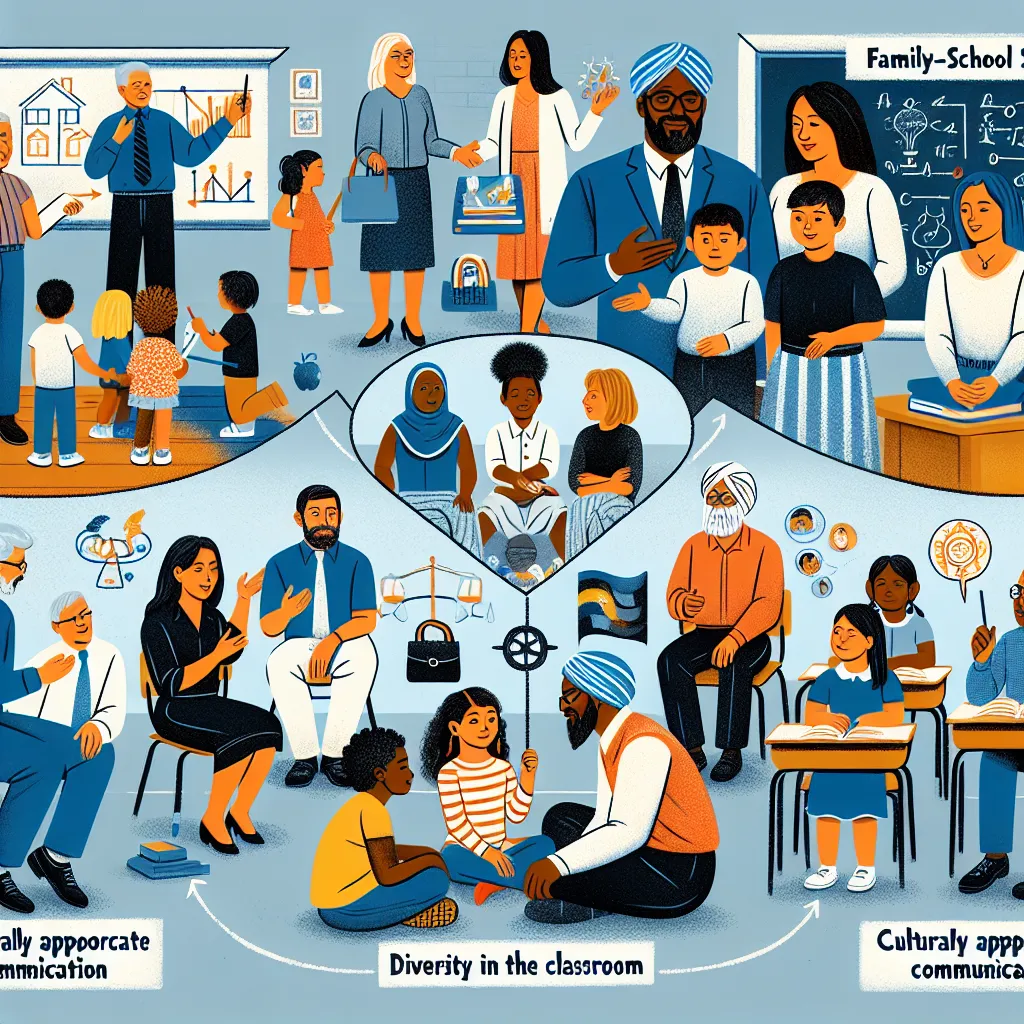Ask AI on The Internet
Question: 3.1 Explain the difference between parental involvement and parental engagement. (4) 3.2 Below are the seven key dimensions of family-school partnerships (Gestwicki, 2016; Family-School Partnerships Framework, 2018). • Communicating • Connecting learning at home and school • Building community and identity • Recognising the role of the family • Consultative decision making • Collaborating beyond the school • Participating 3.2.1 Which of the above dimensions do you consider the most important and why? (4) 3.2.2 Which dimension do you consider the least important and why? (4) 3.3 Provide two examples of classroom-based activities to make learners aware and respectful of diversity. (8) 3.4 Define the meaning of culturally appropriate communication and provide an example to support your answer. (4)
### 3.1 Difference Between Parental Involvement and Parental Engagement Parental involvement often refers to parents participating in school-based activities and events. This can include attending parent-teacher meetings, school events, or volunteering. It's more about parents being present and supportive within the school environment. Parental engagement, on the other hand, is a deeper, more interactive relationship that includes parents being actively engaged in their children's learning processes. This involves a two-way relationship where parents and teachers actively collaborate on educational goals, learning support, and overall student well-being. It emphasizes shared responsibility and learning continuity at home and school. ### 3.2 Seven Key Dimensions of Family-School Partnerships #### 3.2.1 Most Important Dimension **Communicating** is considered the most important dimension. Effective communication forms the foundation of strong family-school partnerships. It ensures that families are kept informed about their child's progress, school policies, and events. Clear, consistent, and two-way communication builds trust, allows for early identification of issues, and ensures that both teachers and parents are on the same page regarding the child's education and well-being. #### 3.2.2 Least Important Dimension While all dimensions have intrinsic value, **Collaborating beyond the school** might be seen as the least critical within the context of direct educational outcomes. This dimension, while valuable for broader community involvement and real-world experiences, may not directly affect a student's daily academic progress as immediately as other dimensions do. However, it's essential to understand that deeming it 'least important' does not diminish its overall value in a holistic educational approach. ### 3.3 Classroom-Based Activities to Make Learners Aware and Respectful of Diversity 1. **Cultural Show-and-Tell:** - **Activity Description:** Students bring in an item from home that represents their cultural heritage. - **Objective:** Each student presents their item, explains its significance, and shares something unique about their culture. - **Outcome:** Promotes understanding and appreciation of diverse backgrounds, encouraging respect and curiosity about different cultures. 2. **Diversity Storytelling:** - **Activity Description:** Read stories from various cultures and have discussions about the themes, characters, and cultural context. - **Objective:** Students can pick stories representing different cultures and share them with the class, followed by discussions. - **Outcome:** Helps students understand and empathize with people from various backgrounds, fostering an inclusive classroom environment. ### 3.4 Meaning of Culturally Appropriate Communication **Culturally appropriate communication** means communicating in ways that are respectful of and inclusive towards diverse cultural backgrounds. This involves understanding and being sensitive to cultural norms, values, and language preferences. **Example:** In a multicultural classroom, a teacher might use bilingual communication for parents who are more comfortable in a language other than English. For instance, if a student’s parents speak Spanish, the teacher could provide translated materials and use simple Spanish phrases to ensure effective and respectful communication. This way, parents feel valued and understood, facilitating better student support and family engagement.
Think your answer is better than the AI's? Post it below.
Other Most Relevant Posts:
 "Exploring Family-School Partnership Dynamics: A Deep Dive into Parental Involvement and Engagement"
"Exploring Family-School Partnership Dynamics: A Deep Dive into Parental Involvement and Engagement"
 Ask AI: 5.2
Briefly discuss the role of the school in establishing and supporting familyschool partnerships. Focus on three distinct points.
(9)
Ask AI: 5.2
Briefly discuss the role of the school in establishing and supporting familyschool partnerships. Focus on three distinct points.
(9)
Question Tags
If you want your question answered by an AI, click here.





Post your own comment: